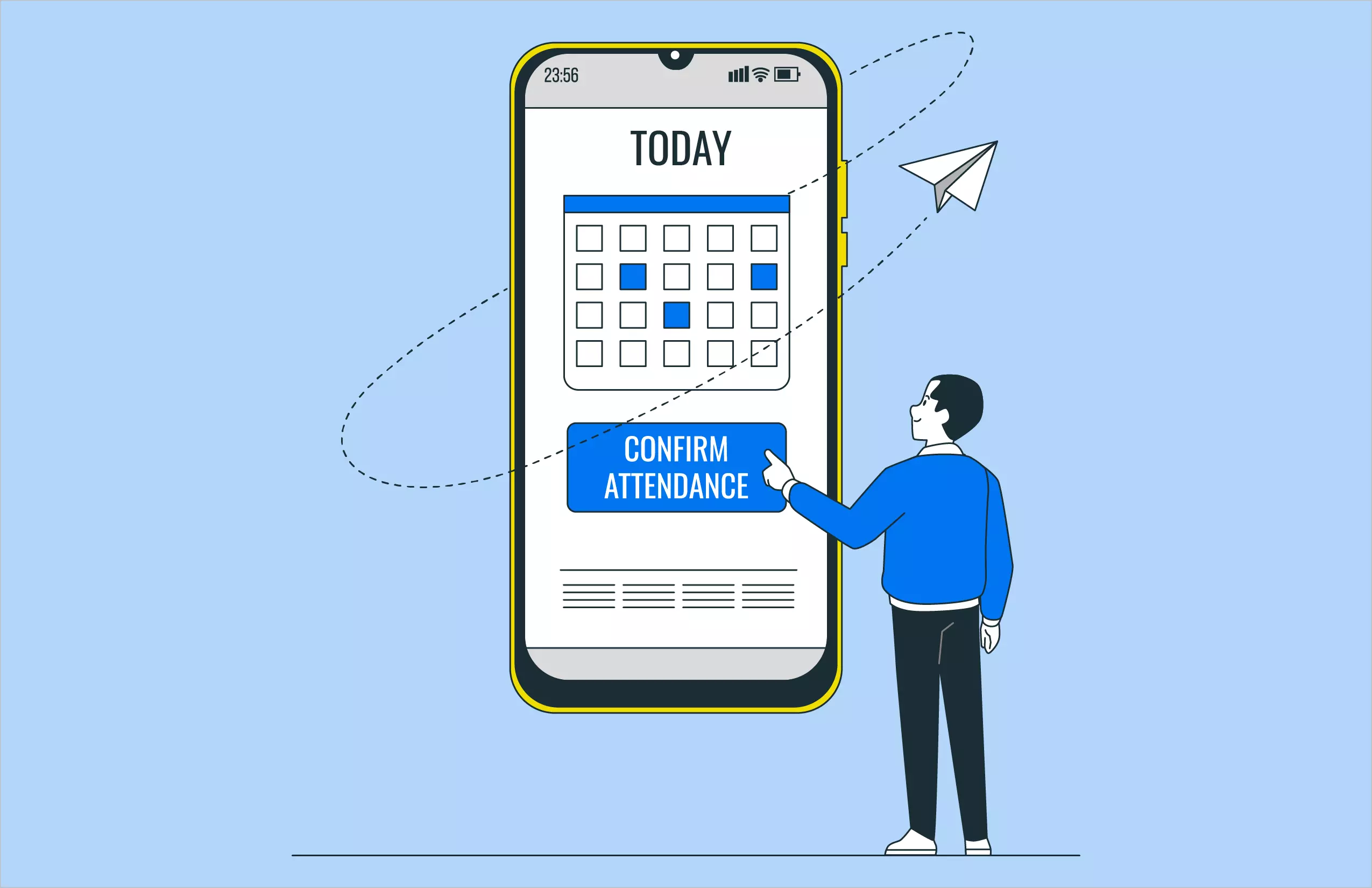
Quiet Quitting: A Rising Workforce Trend You Need to Address
Table of Contents
“Quiet Quitting,” a term popularized by digital content creator Zaid Khan on TikTok, has recently emerged in the workforce, be it in remote or in-office jobs.
It describes a subtle scenario far from dramatic resignation, where business operations continue but are undermined by quiet quitters, leaving an intense impact on the business.
Based on behavior, attitude, motivation, and most importantly ambition, the term quiet quitting can seem different for individual employees. Although the signs may be subtle, it’s crucial to step forward and openly discuss the issue.
Let’s get to know everything about quiet quitting before taking steps to identify quiet quitters, talk to them, and try anything to mitigate potential risks.
What is Quiet Quitting?
The concept of quiet quitting has prominently fueled common myths about employee engagement. It defines a phenomenal phase where employees do their core responsibilities but stop putting in extra effort to go above and beyond for their company’s profit. They follow a process of stealth departure, becoming emotionally unavailable and disengaged. Since these quiet quitters don’t actually leave physically, they continue receiving their regular remuneration.
So, what exactly does this silent quitting look like?
- Gradually offload responsibilities and reduce workload.
- Less attendance in meetings, especially those that are comparatively less mandatory.
- A lack of enthusiasm and engagement when it comes to development and growth.
- Set of boundaries in work completion only which is similar to the job description.
- A noticeable hype in leaves due to burnout, sickness, or stress-related absence.
- Often unnecessary stretches on projects which one is good at.
For example, employees are available for a 9 to 5 job but neither seek additional tasks beyond what is absolutely necessary nor take regular time off, to avoid drawing sharp attention. However, they smartly manage to stay under the radar while receiving a fair wage, just like their other colleagues.
Now, let’s see what the data says about it:
- The trend has increased significantly, based on which Gallup highlights when only 23% of people stay engaged at their workplace, 18% absolutely stay beyond a hustle-bustle work culture.
- In fact, when it is said that this silent quitting has started with Generation Z, it’s not the same for the followers. As per the Hubspot report, 32% are full-time Gen Z, 33% are full-time millennials and 35% are full-time Gen X.
What is the Goal of Quiet Quitting?
To some extent, employees choose to quit quietly when they don’t feel good enough anymore about fulfilling their purposes.
According to Hubspot research, they go for it mainly for four reasons:
- Pay is less competitive according to the market (38%).
- Eagerly want to switch career paths (24%).
- Lack of understanding of purposes to do a work (23%).
- Burnout in managing work-life balance (20%).
According to the PEW Research Center, 63% of quiet quitters find their way to exit because of lack of advancement and even 57% are feeling disrespected at their workplace.
Moreover, the Harvard Business Review highlights that “Quiet quitting is less about employees’ unwillingness to work harder or creatively. More often than not, quiet resignations arise from a manager’s inability to strike a balance between achieving results and considering the needs of others.”
Now, you may ask, why doesn’t an employee directly communicate with his manager to discuss the current situation? The answer can vary, as every individual has their own reasons. However, some common thought processes are as follows:
? Maintaining privacy
Some employees prefer to keep their personal and professional lives separate and, most importantly, confidential. They don’t disclose their decisions because they fear that announcing their resignation could draw unnecessary attention, strain professional relationships, and backlash their image.
? Avoiding confrontation
Quiet quitters find many ways to exit their job because they don’t feel comfortable with conflict or argument. One of the main reasons behind this is their uncertainty about their managers’ team management skills and concerns about whether their issues will be listened to. That’s why they spare themselves and management from an awkward confronting situation.
? Keeping options for future
Although quiet quitters leave their current jobs, they still want to keep their options open with the current organization for better future opportunities. They don’t prefer to leave in a way that could question their work ethics, professional relationships, or the goodwill that they have already earned.
Overall, the ultimate goal of quitting quietly revolves around the process of leaving a job but without prior announcement and with minimum disruption.
How to Smartly Avoid Quiet Quitting?
Neither you nor your employees can take full responsibility alone to avoid it. On one hand, employees find it due to exploitation and setting over expectations, while on the other hand, managers attribute it to disengagement and unwillingness to work by anyone.
Since quitting silently may seem ambiguous from different perspectives, it’s better for individuals to take their own responsibilities. For that, the following approach can be effective:
? The process that a business can follow
Look at the signs and find out the root cause
First and foremost, sharply observe any changes in your employees’ behavior, interaction, and engagement to compare them with the signs of quiet quitting. Understanding this well can help you get ahead of the problem, deal with employee absconding, and prevent an employee from secretly finding a way out for leaving.
Invest in employee development
When your employees are the backbone of running your business smoothly, creating a full-fledged growth plan for individuals as well as the organization is absolutely essential. In addition to this, supporting them with proper training and upskilling sessions and ensuring they feel safe and respected is your responsibility.
Build a transparent work culture
Transparency empowers faith and a friendly work environment irrespective of whether you’re in a remote or in-house office setup. Know your team about your goals very clearly and without overwhelming them, share information in cross-channels to work collaboratively, and cultivate trust in one another to work innovatively.
Focus on employee engagement
To eliminate the risk of quitting quietly, boost employee engagement and motivation so that you can conquer the battlefield of disengagement. Ask your employees to share their feedback, take note of it all, and provide constructive feedback without demotivating or disappointing anyone. Moreover, take one step further to identify, acknowledge, and celebrate each employee’s achievements with a token of gratitude and appreciation.
? The process that an employer can follow
Employees must think beyond limiting their interaction with managers and take responsibility for their job satisfaction and mental well-being. Whether negotiating workload and appraisals to match expectations, seeking open and fair opportunities to improve skills and knowledge, or sharing reasons behind advocating for a healthier work-life integration – employees should speak up on their own.
After all, it’s better to allow your employees’ firm opinions if you really want to stay out of vague assumptions and try hard to head in the right direction.
Take Lystloc into Action to Take Controlling Measure of Quiet Quitting
When a lot of times, employees have gone through a miserable experience and won’t feel compelled, they take the path of quitting quietly. However, as an employer, you can shift towards building the right culture where you not only identify the problem but also solve it quickly to prevent losing your skilled employees.
For this, investing in employee management software such as Lystloc would be undoubtedly a good choice. Before you ask why, let me give the reason:
- Lystloc employee attendance app along with meeting notes helps you set a realistic goal irrespective of the business field.
- Creating, assigning, and distributing tasks and tracking progress offline to eliminate constant follow-ups.
- Watching timely work accomplishment to ensure measuring engagement in working hours.
- Setting reminders and notifications for attendance, individual tasks, employee check-in and check-out through apps to save your employees time and save them from unnecessary burnout.
- Managing live reports and data retention to classify working methods and create strategies to inspire all to boost productivity and efficiency.
Well, you can check all your benefits when signing up with Lystloc. Remember, understanding and addressing complexities in a workplace can save your business from the wave of quiet quitting.



















